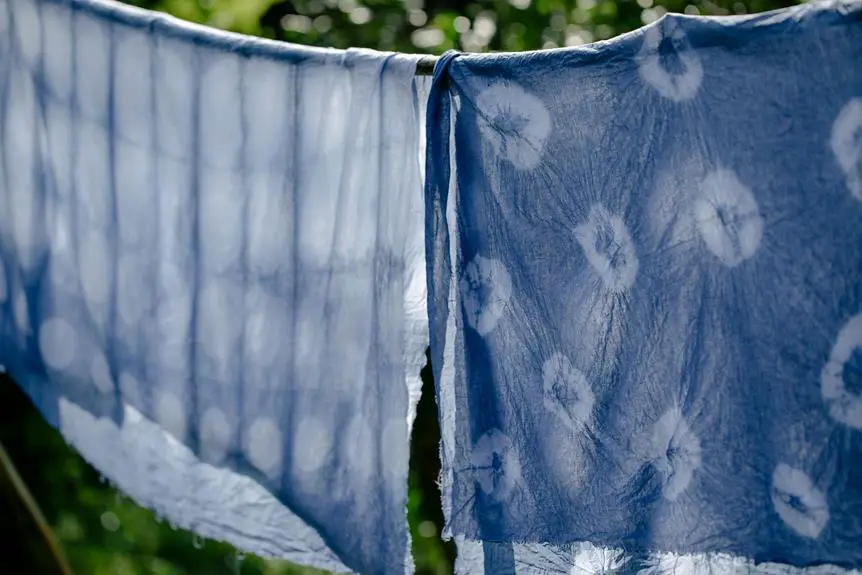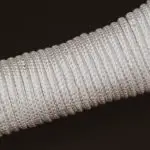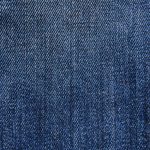When you consider the dyeing properties of ring spun cotton, you'll find it boasts unique characteristics that set it apart. Its tightly twisted fibers allow for excellent dye penetration, ensuring vibrant colors that hold well over time. However, the success of your dyeing process hinges on several factors, from dye type to temperature and pH levels. So, what's the best way to achieve those rich, enduring hues? Exploring the nuances of dyeing techniques and preparation methods could reveal surprising results.
Table of Contents
Overview of Ring Spun Cotton
Ring spun cotton is commonly used in textiles due to its strength and softness, making it a popular choice for high-quality fabric. It's created by twisting and thinning strands of cotton fibers, which enhances the yarn's durability and gives it a smooth finish.
When you touch ring spun cotton, you'll notice that it feels softer against your skin compared to other cotton types, providing comfort that's hard to beat. You'll find this fabric in many everyday items, including t-shirts, bed linens, and towels.
Because of its superior qualities, ring spun cotton tends to hold up well in the wash, resisting fraying and fading better than many alternatives. This longevity means your favorite clothes or home textiles maintain their look and feel over time.
Moreover, the spinning process allows for a more uniform yarn, which contributes to a more consistent appearance in the finished product. Whether you're looking for something luxurious or practical, ring spun cotton has you covered.
It's important to understand these qualities, as they play a significant role in how the fabric behaves, especially when you consider different dyeing techniques and their effectiveness on this material.
Dye Affinity of Ring Spun Cotton
The unique properties of ring spun cotton contribute significantly to its dye affinity, making it adaptable to a variety of coloring techniques. You'll find that the tightly twisted fibers allow for better penetration of dye, ensuring a more uniform and vibrant finish.
Since ring spun cotton has a smooth surface, it reduces the likelihood of uneven dyeing, which often occurs with other cotton types. When you dye ring spun cotton, you'll appreciate how it absorbs colors beautifully, ranging from bright to subtle shades.
Its increased surface area, due to the finer yarn, lets it take in dyes more effectively, resulting in a rich depth of color. The fabric's structure also enhances dye bonding, ensuring that the color stays intact even after multiple washes.
Moreover, ring spun cotton works well with both natural and synthetic dyes, giving you the freedom to experiment with different dyeing techniques. This versatility makes it a favorite for various applications, from fashion to home textiles.
Factors Influencing Dyeing Results
Several factors influence the dyeing results of ring spun cotton, including dye type, temperature, and application method.
Choosing the right dye is crucial; some dyes bond better with cotton fibers, leading to richer, more uniform color. Reactive dyes, for example, are often preferred for their strong dyeing ability with cotton.
Temperature plays a significant role too. If you dye at too low a temperature, the dye mightn't fix properly, resulting in a washed-out appearance. Conversely, excessive heat can damage the fibers, causing them to weaken. Finding the right balance is essential.
The method of application also matters. Techniques like immersion or spray dyeing can yield different results, impacting shades and evenness of color. You'll want to choose an application method that suits the type of dye and desired outcome for your project.
Lastly, the pH level of the dye bath can affect color intensity. A balanced pH helps ensure maximum dye absorption, while an unbalanced pH can lead to unexpected results.
Common Dyeing Techniques
When it comes to dyeing ring spun cotton, you've got a few popular techniques at your fingertips.
You can explore natural dyes or turn to synthetic options, each offering unique benefits.
Plus, pre-treatment plays a crucial role in achieving vibrant, lasting colors, so understanding these methods is essential.
Natural Dye Application
Natural dyes can be applied using various techniques, each offering unique results and influencing the final color and appearance of ring spun cotton.
One common method is immersion dyeing, where you soak the fabric in a dye bath. This technique allows the cotton to absorb the dye evenly, resulting in rich, consistent colors.
Another technique is direct application, where you paint or print the dye onto the fabric. This approach gives you more control over design and color placement, allowing for intricate patterns and visuals.
Furthermore, you can also explore tie-dyeing or shibori techniques, where you manipulate the fabric before dyeing to create stunning, resist patterns.
You might also consider eco-printing, which involves using natural materials, such as leaves or flowers, to transfer color onto the cotton. This method often produces softer, earthy tones and unique designs.
Lastly, you can experiment with batch dyeing, where you dye multiple pieces of cotton together, ensuring consistency in color and tone across your projects.
Each of these techniques will help you harness the beauty of natural dyes while showcasing the versatility of ring spun cotton.
Synthetic Dye Techniques
Synthetic dye techniques offer a wide range of options for achieving vibrant and consistent colors on ring spun cotton. You'll find several common methods that can enhance your dyeing projects.
One of the most popular techniques is the immersion dyeing method, where the fabric is fully submerged in a dye bath. This ensures even color distribution and can produce rich hues.
Another effective option is the spray dyeing technique. Here, you use a spray gun to apply dye directly onto the fabric. This method is excellent for creating gradients and artistic effects, allowing for more creative freedom.
If you're aiming for a more controlled application, you might try the discharge dyeing technique. It involves using a discharge agent to remove dye from specific areas of the fabric, resulting in unique patterns.
You might also consider the pad dyeing method, where the fabric is passed through a dye solution and then through rollers. This technique is efficient for large quantities and provides excellent penetration.
Whichever method you choose, synthetic dyes are versatile and can meet various aesthetic needs while ensuring longevity in color retention.
Pre-Treatment for Dyeing
Pre-treatment is crucial for achieving optimal dye uptake on ring spun cotton, ensuring the fabric is clean and free from any residues that could affect color absorption.
To start, you'll want to thoroughly wash the cotton fabric to remove any oils, dirt, or sizing agents. This step typically involves soaking the material in a mild detergent solution followed by rinsing it thoroughly.
After washing, it's often helpful to use a pretreatment solution that enhances color retention. A common method is the use of a mordant, which helps the dye bond better to the fibers. If you're aiming for specific hues, you might want to consider acid or salt-based mordants depending on the dye type you'll be using.
You can also utilize a fixer to ensure the dye adheres effectively post-dyeing, enhancing the final color's vibrancy and fastness.
Always follow manufacturer guidelines for any pretreatment agents to avoid damaging the cotton. Staying consistent with these pre-treatment steps lays a solid foundation for successful dyeing, ultimately leading to more vibrant and long-lasting colors in your ring spun cotton projects.
Colorfastness in Ring Spun Cotton
When dyeing ring spun cotton, its colorfastness plays a crucial role in determining how well the fabric retains its hue over time. You want your dyed cotton to remain vibrant and true, so understanding what affects colorfastness is key.
Several factors can influence how well the colors hold up:
- Dye Type: Different dyes have varying levels of colorfastness; some may fade quicker under light exposure.
- Washing Conditions: Frequent washing or using harsh detergents can significantly impact color retention.
- Exposure to Sunlight: Prolonged sun exposure may lead to noticeable fading, especially with bright colors.
- Fabric Composition: The blend of cotton with other fibers can either enhance or weaken color stability.
Pre-treatment and Post-treatment
When you're working with ring spun cotton, understanding pre-treatment and post-treatment techniques is essential for achieving vibrant colors.
Pre-treatment prepares the fabric to better absorb dye, while post-treatment helps maintain the quality of the dye job.
Let's explore the key steps involved in both processes to enhance your dyeing experience.
Pre-treatment Techniques Overview
Effective dyeing of ring spun cotton hinges on the right pre-treatment and post-treatment techniques to enhance color uptake and fabric quality.
When you prepare your cotton fabric, you'll want to ensure it's clean, absorbent, and ready to interact with the dye. Here are four essential pre-treatment steps to keep in mind:
- Scouring: This removes impurities like oils and waxes, which can inhibit dye absorption. Use a mild alkaline solution for best results.
- Bleaching: If you're aiming for a lighter color, applying a bleaching agent helps create a uniform base by removing natural pigments.
- Mercerization: This process enhances the strength, luster, and dye affinity of cotton. Soaking in a caustic soda solution can significantly improve your fabric's dyeing properties.
- Washing: After pre-treatments, thoroughly wash the fabric to remove any residual chemicals. This step is crucial for preparing the fabric before dye application.
Post-treatment Care Steps
Post-treatment care is vital to maintain the vibrancy and longevity of dyed ring spun cotton fabrics.
After dyeing, it's essential to rinse the fabric thoroughly in cold water to remove any excess dye, preventing bleeding during future washes. You'll want to use a mild detergent suitable for colors when washing. Hot water can cause fading, so stick to cold or lukewarm settings.
To enhance dye retention, consider using a color-safe fabric conditioner during the rinse cycle. This can help lock in color and soften the fabric. When drying, avoid direct sunlight, which can lead to color fading; instead, air dry in a shaded area or use a low-temperature dryer setting.
Ironing can also impact your fabric's appearance. If you need to iron, use a low to medium heat setting and be cautious around the dyed areas, as excessive heat may negatively affect the color.
Lastly, store your dyed ring spun cotton fabrics away from direct sunlight and in a cool, dry place to prevent any potential fading or deterioration. Following these steps ensures your dyed fabrics stay vibrant for years to come.
Tips for Optimal Dyeing
To achieve vibrant and uniform colors in ring spun cotton, prepare the fabric properly and choose the right dyeing method. Following a few essential tips can enhance your dyeing results and ensure the best color payoff.
- Pre-wash the fabric: Remove any sizing or impurities by washing the cotton before dyeing. This step also helps to relax the fibers, allowing them to absorb dye more effectively.
- Select the right dye: Opt for fiber-reactive dyes, as they bond well with cotton, providing intense colors that won't wash out easily.
- Use proper dyeing temperature: For ring spun cotton, maintaining a consistent temperature during the dyeing process is crucial. Higher temperatures typically yield better color absorption, so aim for 140-200°F (60-93°C).
- Set the dye with a fixative: After dyeing, use a vinegar or salt solution, based on the dye type, to fix the color and prevent fading.
Frequently Asked Questions
Can Ring Spun Cotton Be Dyed Using Natural Dyes?
Yes, you can dye ring spun cotton with natural dyes. Just ensure the fabric is prepped properly, as this enhances color absorption and gives you vibrant, lasting results. Experiment with different mordants to achieve varied shades.
What Is the Best Temperature for Dyeing Ring Spun Cotton?
To achieve optimal results when dyeing ring spun cotton, you should generally work between 140°F to 200°F. This temperature range helps the dye bond effectively, resulting in vibrant and long-lasting colors for your fabric.
Is It Safe to Dye Ring Spun Cotton at Home?
Yes, it's safe to dye ring spun cotton at home. Just use non-toxic dyes and follow the manufacturer's instructions. Ensure proper ventilation, wear gloves, and protect your workspace to avoid mess or skin irritation.
How Does Moisture Affect Dye Uptake in Ring Spun Cotton?
Moisture plays a crucial role in dye uptake. When you soak cotton, the fibers swell, allowing dye molecules to penetrate more effectively. Aim for the right moisture level to achieve vibrant, even coloring in your projects.
Can Ring Spun Cotton Be Tie-Dyed Effectively?
Yes, you can tie-dye ring spun cotton effectively! It absorbs dyes well, allowing vibrant patterns to form. Just make sure to use the right dye and pre-wash the fabric for better results. Enjoy your creative process!
- How Does Ring Spun Cotton Affect Garment Fit and Shape Retention? - August 13, 2024
- What Are the Challenges in Producing Ring Spun Cotton? - August 13, 2024
- Is Ring Spun Cotton Suitable for Plus-Size Clothing? - August 13, 2024







